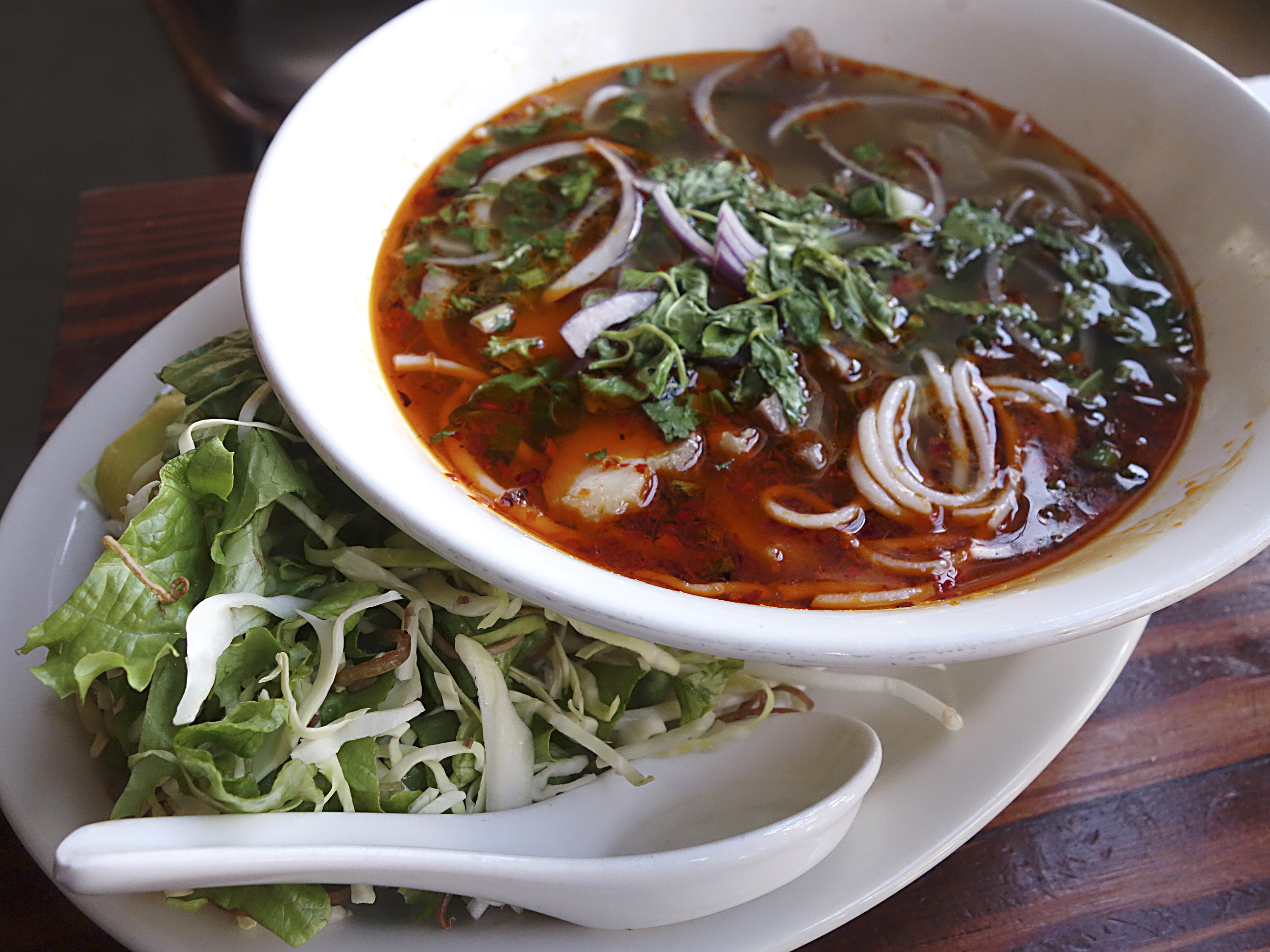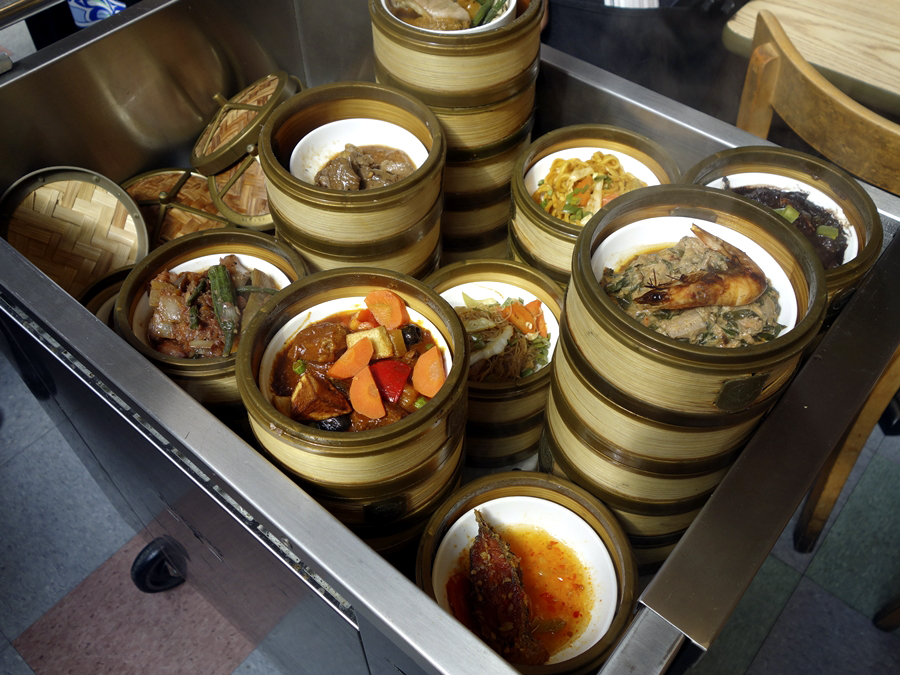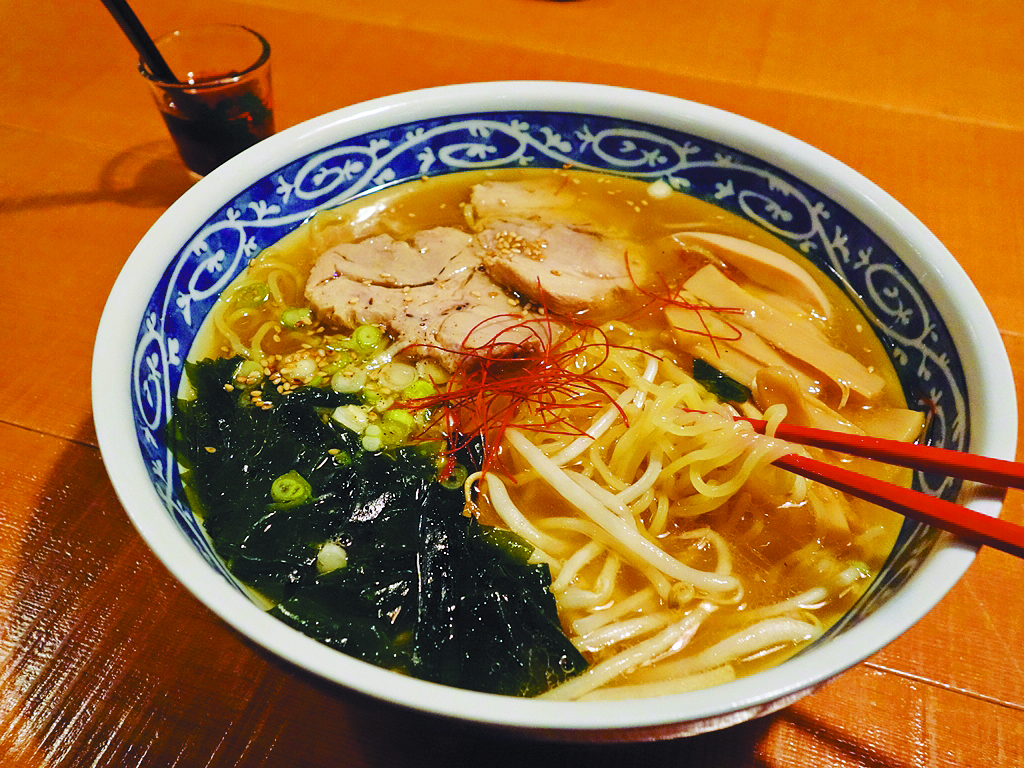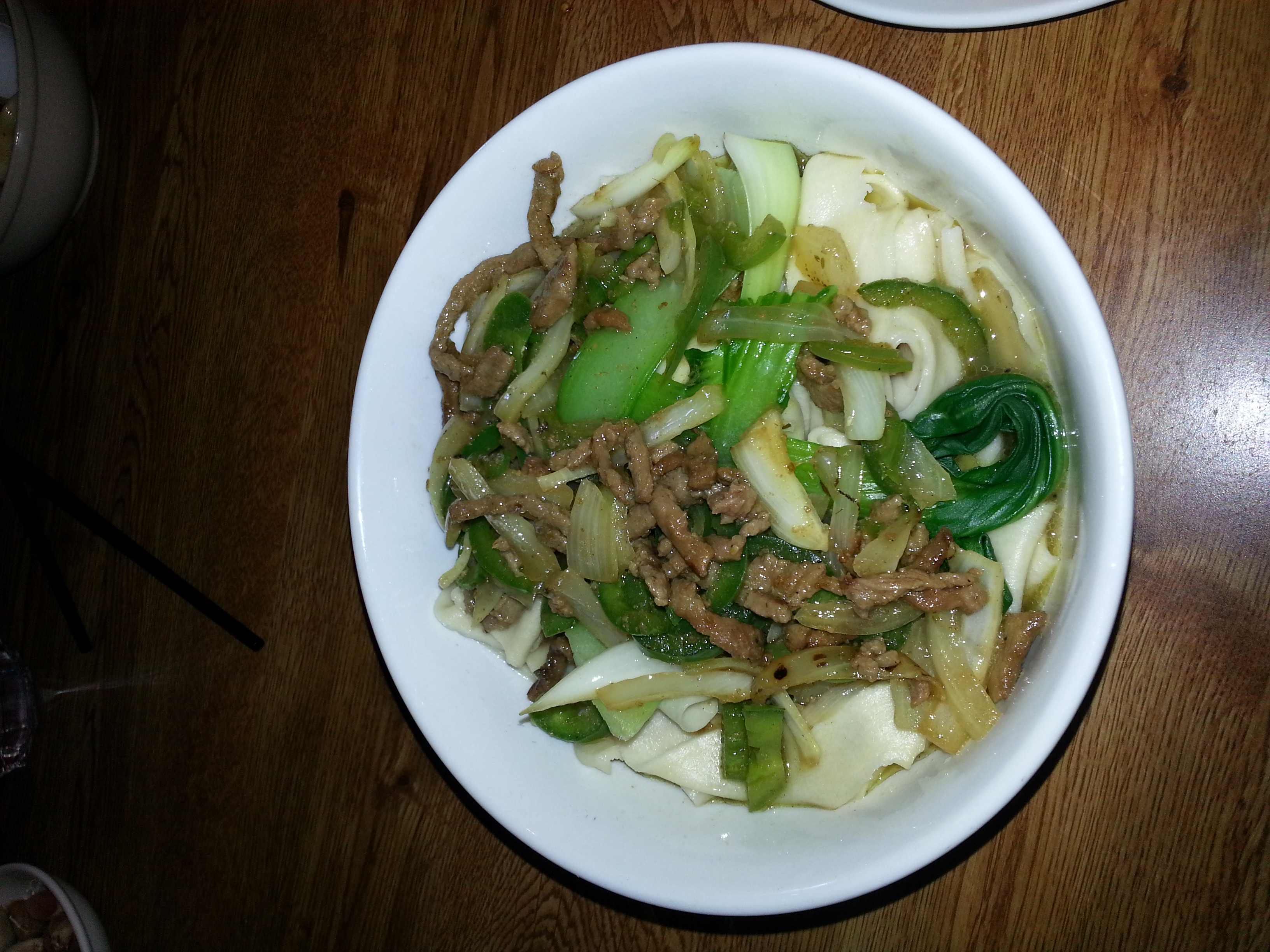Dish: Spicy Silver Noodle SoupPlace: Penang Food Court, International DistrictPrice: $7.50 In the bowl: Per the listing on the wall: “Thin silver noodles with fish balls, pork, shrimp and bean sprouts in a light soup.” I didn’t notice any pork, though also swimming in the broth were a few snow peas, broccoli (but why not Chinese broccoli?), green beans, and some imitation crab.Supporting cast: Nothing.What to do: Just start eating. Noodling around: The chef, who had been hovering around my table, perhaps wondering if I was going to steal his recipe, was particularly adamant about telling me (with limited English) that the broth was made with a Malaysian curry paste (mixed with water, so no fish or chicken stock) that is impossible to find in the United States. No worries about theft, as it was rather “flat” tasting. Despite being advertised as spicy, this soup is considerably less spicy than the Malay prawn mee which my partner tried. And that was far less dynamic and velvety than the laksa I had at Satay recently.Silver noodles turned out to be rice vermicelli. It’s easy to get confused with rice-noodle terms; I find Terry Durack’s Noodle helpful, with its photos and descriptions. According to Durack, the Chinese call rice vermicelli “rice sticks,” but rice sticks are the flatter rice noodles like you find in pho. (They’re actually called “banh pho” in Vietnamese.) Rice vermicelli are more wavy than rice sticks, and tend to tangle. With your chopsticks, you’ll be pulling up clumps of these noodles; they are chewier and less slurpable than other types of noodles.If still hungry: I’d probably opt for the roti canai ($3.00) as a traditional way to start my Malaysian meal, but if you’re looking for more vegetables (the ones in the soup were too soggy), there are lettuce or Chinese greens with oyster sauce ($4.00).Be aware/beware: I’m not really sure what’s going on with this restaurant. It seems like it’s both Chinese and Malaysian, with separate menus for each cuisine, but the Chinese menu also advertises pho. (Perhaps more frightening, there are also side dishes of French toast and French fries.) One takeout menu lists the name as “Penang Food Court Asian Food,” while the other says it’s “Malaysia Penang Food Court.” One thing is for sure: It’s not a food court. Penang Food Court (so says my receipt) is in the former Noodle King location. That place didn’t last long, and I fear this one will follow the same fate. There’s a wall papered with offerings (some with photos), often with more description than you’ll find in the table menus. I laughed at the yellow price tags stickered to the signs, and wondered (as I often do at restaurants like this) why some items are an even dollar amount, while others end with 99 cents. And I’d really like to get the story on the use of photos from Malay Satay Hut’s menu–with the prices crossed out. Follow Voracious on Facebook and Twitter.
More Stories From This Author
For 50 years, Zeke’s off US 2 has served delicious burgers
It’s been a popular pit stop in Gold Bar for skiers and hikers, and the same family still runs it.
By
Evan Thompson • June 6, 2019 11:05 am
With ‘Game of Thrones’ ending, it’s time for a proper feast
How to make a meal inspired by the Lannisters’ and Starks’ world, fit for the King in the North.
By
Ben Watanabe • May 15, 2019 1:30 am
Stash Box: 2016-2019
Time to roll one for the road …
By
Meagan Angus • February 26, 2019 3:15 pm







